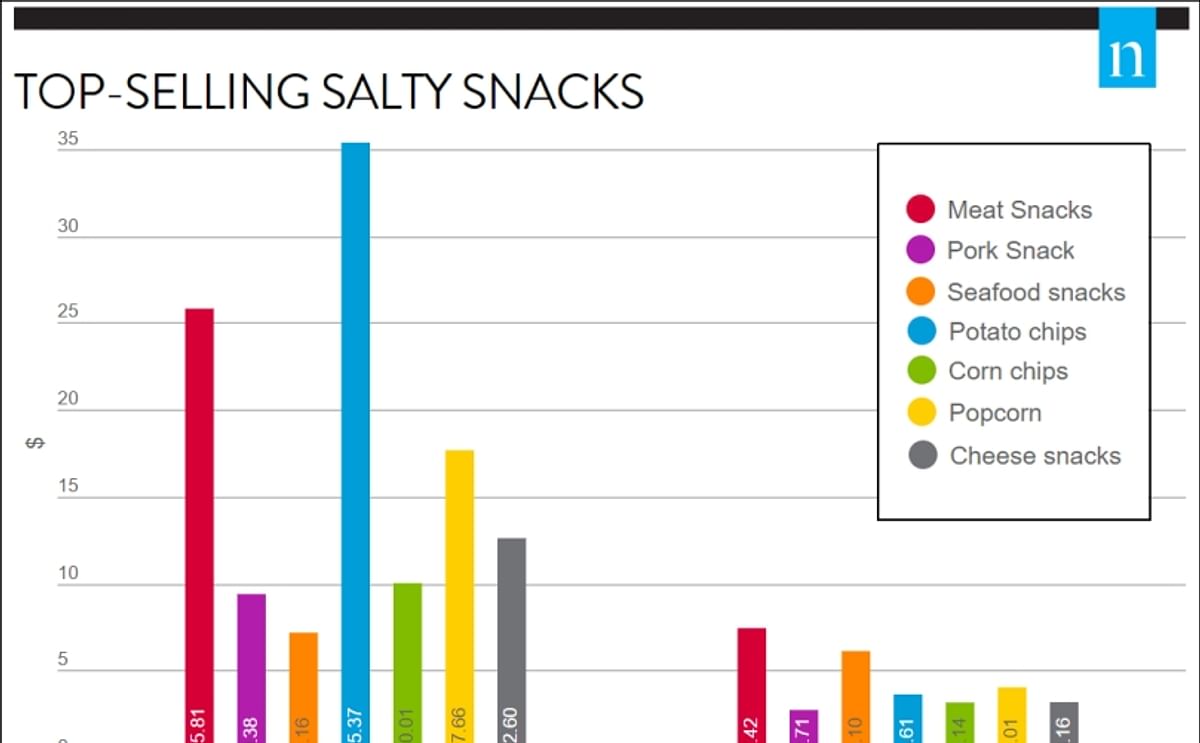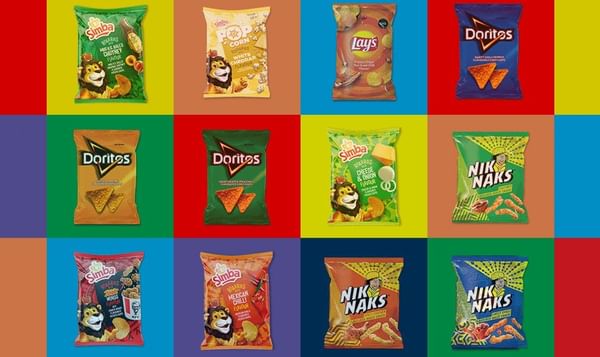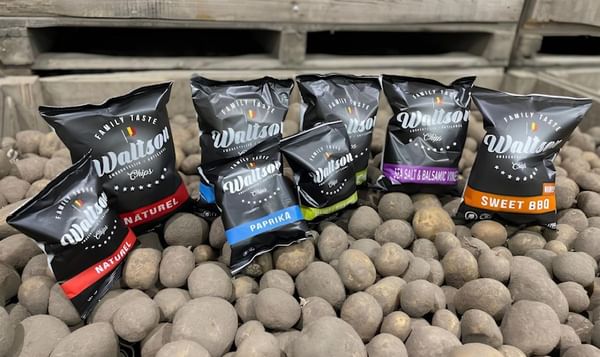Household Snack Expenditure in the United States by Type of Salty Snack (Courtesy: Nielsen Homescan, 2017)
Meat Snacks nibbling at Potato Chips market

Whether acting as meal replacements or a stopgap until a formal feast, snacks play a critical role in the American diet. They’re also a major cog in the retail landscape, as the total salty snack category accounted for more than $27.5 billion in sales across Nielsen-measured U.S. retail stores for the year-ended Feb. 25, 2017.
Yet while vast, the snack category is choppy with waves of uptrends and troughs of downtrends, highlighting the need for manufacturers and retailers to stay in tune with consumer preferences at an ever-evolving pace. Notably, despite consumers’ drive to lead more healthy lifestyles, snacking trends appear to be shifting away from snack bars, cereal snacks and dried fruits.
And even the almighty potato chip category, responsible for more than $7.2 billion in annual sales, posted dollar growth of just 1.7% for the recent year. Pretzels, another snacking staple, lost 0.5% in sales in the last year, pulling in just under $1.5 billion.
In looking across the salty snack realm, however, opportunity has been a little brighter outside the realm of traditional chips and pretzels. In fact, the meat snack category has posted compound annual sales growth of more than 7% over the past four years, with sales growth of 3.5% for the year ended Feb. 25, 2017.

Jerky had a particularly strong year, boasting sales growth of nearly 7%
(Courtesy: Larry Jacobsen / Flickr)
While the potato chip category maintains a dominant lead over other salty snacks in terms of overall sales, household spend on meat snacks is a not-too-distant rival. In fact, American households spend an average of $25.81 per year on meat snacks. Their per-trip spend on sticks and jerky is also about twice as much as it is on popular staples like potato chips and popcorn ($7.42 vs. $3.61 and $4.01, respectively).
Who are the meat snack buyers?
So which groups are most interested in meat snacks?
In looking across generations and ethnicities, Asian-American households spend the most each year ($31.61 on average). In fact, they’re more than 22% more likely to buy meat snacks than the average shopper.
In terms of age groups, Baby Boomers are the biggest buyers, spending $28.48 per year, making them 10% more likely to buy meat snacks than the average shopper.
Purchase channel
When consumers shop, they're likely to buy meat snacks at the same primary three channels where they buy salty snacks, but they buy significantly less at conventional grocery stores.
While meat snacks have experienced stable sales growth over the past few years, it’s important to take note of other up-and-coming protein snack varieties.
Though much smaller than the larger meat snack category, pork snack products have been trending down since climbing above 6.5% for the year ended March 1, 2014. In fact, sales growth was just under 1% for the most recent 12-month period.
Seafood snacks, on the other hand, have been a roller coaster of a sales trend, with growth nearing 200% in both 2013 and 2014 before losing ground in 2015 and 2016. Overall sales in this sub-category came in at just under $2 million for the recent year, down from $3.2 million a year earlier.










